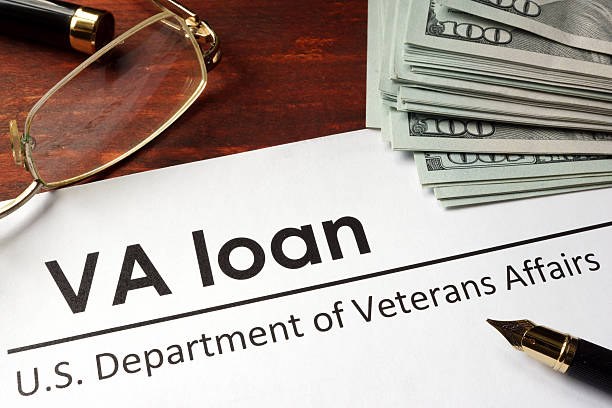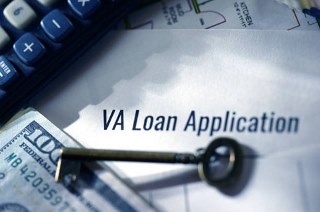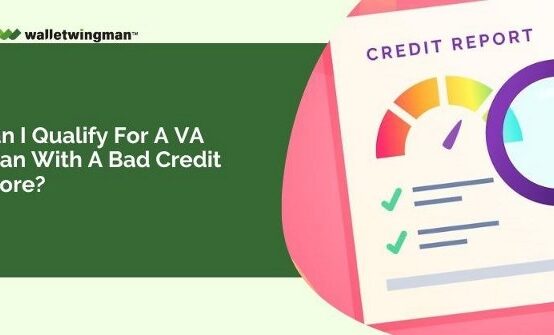When you decide to apply for a VA-guaranteed mortgage loan, the lender will review various aspects of your financial situation to determine if you’re qualified. One of the things they examine is the current amount of debt that you have, including the new debt that would come with the mortgage loan.
This leads to a common question among borrowers: How much debt can I have and still qualify for a VA loan?
The short answer is that it’s up to the mortgage lender. While the Department of Veterans Affairs prefers to see a debt-to-income ratio no higher than 41%, they give mortgage lenders leeway to approve borrowers with higher debt ratios.
What Is a Debt-to-Income Ratio (DTI)?
To address this question properly, we must define the net-to-income ratio. Along with your credit score and income, this is one of the most important factors when qualifying for a VA loan. Debt ratios also apply to other types of mortgage loans, including FHA and conventional. But here, we will limit our discussion to the VA loan program in particular.
Your debt-to-income ratio (DTI) is the percentage of the gross monthly income that contributes towards paying your monthly debt obligations. In order to calculate DTI, you need to divide your total monthly debt payments and your gross monthly income and multiply by 100.
Lenders and the VA use this DTI to assess your ability to afford a mortgage payment. A lower DTI ratio can indicate that you possess more disposable income to cover your monthly mortgage payment and other expenses.

You actually have two of these ratios from the lender’s perspective:
Front-end DTI Ratio (a.k.a., “housing ratio”): The percentage of a borrower’s gross monthly income that goes towards housing-related expenses, including mortgage payments, property taxes, and homeowners insurance.
Back-end DTI Ratio: The percentage of a borrower’s gross monthly income that covers all monthly debt obligations, including housing-related expenses, credit card payments, student loan payments, and auto loan payments.
Qualification for VA Loan
Many people wonder if they can qualify for a VA home loan with poor credit. There are three main conditions that you must meet:
- You were an active-duty veteran who served for at least 90 days during a war.
- You have provided active service for 181 consecutive days during peacetime.
- You are a veteran with at least a 41% debt-to-income ratio.
Make sure that you meet these VA loan requirements for bad credit; however, most Veterans frequently disregard or forget the last qualifying condition, resulting in loan application rejections.
How to Calculate the DTI Ratio
Here’s an example calculation for a borrower’s back-end debt ratio:
Monthly income: $5,000
Monthly mortgage payment: $1,000
Other monthly debt payments: $500 (credit cards, student loans, etc.)
Total monthly debt payments: $1,000 + $500 = $1,500
Debt-to-income ratio: $1,500 / $5,000 * 100 = 30%
This means that 30% of the borrower’s gross monthly income goes towards paying their monthly debt obligations.
This math is important because it helps us answer the question we started with. How much debt can I have and still qualify for a VA-guaranteed mortgage loan?
Different Types of Debt-to-income Specific Loan Types

Some mortgage lenders allow for a greater DTI ratio. These ratios are generic but could vary depending on particular situations. These ratios include FHA loan DTI, VA loan DTI, and Jumbo loan DTI.
FHA Loan DTI – If you’re a first-time consumer with a high DTI, an FHA loan can be a good fit. Lenders will normally accept up to 50% DTI; depending on your credit score and loan’s down payment/LTV (loan-to-value) ratio, it may even be higher.
VA Loan DTI – A VA loan is available to U.S. military personnel, veterans, and their spouses who are acquiring a house or refinancing an existing mortgage. This sort of financing offers zero down payment possibilities, no mortgage insurance, and cheap interest rates. The DTI ratio standards differ from other lending programs due to residual income.
Jumbo Loan DTI – A jumbo loan is the ideal option if you have found the perfect property but still require a financing amount that exceeds the conventional loan limit. Remember that in order to qualify, you will normally need a strong credit score, a low debt-to-income ratio (45% maximum), and cash reserves.

The DTI Ratio Compared to Residual Income
Residual income, also known as “discretionary income,” is the amount of money left over (after taxes and loan payments) to meet basic requirements, including food, clothes, petrol, healthcare, and other household costs. While DTIs consider all costs shown on a borrower’s credit report, residual income calculations go a step further.
It takes into consideration expenditures such as income taxes, obligatory retirement deductions (social security), and incidental house expenses such as upkeep and utilities to provide a realistic estimate of the veteran’s monthly discretionary income.
The lender is obligated to compute your debt ratio, which includes a list of items that must be included in the total. The terms residual income and debt-to-income are sometimes used interchangeably.
However, the VA wants to ensure that you have enough money left over to cover your day-to-day needs. To qualify for a VA loan, you must reach a residual income requirement that changes depending on your family size and location.
The VA’s 41% Rule And Why It’s Not a Dealbreaker
The VA doesn’t set an official limit for debt levels. However, they do require lenders to give applicants some additional scrutiny when their DTI ratio is greater than 41%. Specifically, they encourage mortgage lenders to seek compensating factors that might offset the risk associated with higher debt levels.
For example, an article on the VA.gov website:
“The debt-to-income ratio determines if you can qualify for VA loans. The acceptable debt-to-income ratio for a VA loan is 41%.”
But that same article goes on to state:
“The mortgage underwriters will make a thorough inspection of your loan application if your debt-to-income ratio is more than 41%. However, it does not mean that your VA loan application will be rejected straightway.”
In some cases, borrowers with debt ratios well above 50% can still qualify for a VA loan. So, in those cases, the mortgage underwriter will look closer at the borrower’s qualifications, as mentioned in the above quote.
What is the underwriter looking for? In short, compensating factors.
In the context of VA mortgage underwriting, a compensating factor is any condition that offsets the higher risk that comes with a larger debt load. According to VA loan guidelines, when a person’s back-end debt ratio exceeds 41%, the underwriter should “dig deeper” and try to identify compensating factors.
For instance, to qualify for a loan for real estate, one of the simplest methods to minimize your debt-to-income ratio is to lower your loan burden to achieve a real estate VA loan for low credit score. You can achieve this by repaying your obligations as quickly as feasible. To lower your debt commitments, consider do-it-yourself debt payback options such as debt snowball or debt avalanche.
Therefore, you should browse prominent financial websites to learn more about these strategies. Otherwise, you might use expert debt reduction methods to lessen your financial commitments.
This brings us to credit scores. Credit scores are not as important with VA loans as with commercial loans, but you still must have strong credit to finance a house purchase via the VA. The VA does not require credit score minimums, but you must vary of VA loan lenders for bad credit. Typically, 620 is the lowest credit score you can achieve while still getting a VA-backed loan.

A List of Compensating Factors for VA Loans
According to the official VA loan handbook, compensating factors “are especially important when reviewing loans which are marginal concerning residual income or debt-to-income ratio.”
So, a person with a DTI ratio above the 41% threshold mentioned earlier could still qualify for a VA loan eligibility with bad credit if the underwriter can document one or more compensating factors. For example, if a borrower has excellent credit and significant liquid assets, they might be able to get a VA loan approval with bad credit.
Compensating factors for VA loans include, but are not limited to, the following:
- Excellent credit history
- Little or no increase in housing expense
- Conservative use of consumer credit
- High residual income
- Minimal consumer debt
- Long-term employment
- Significant liquid assets
- Sizable down payment
- Satisfactory homeownership experience
Note: in this context, “residual income” refers to money the borrower has left over each month after paying all debt obligations. For example, if you can pay all of your recurring monthly debts and still have some extra cash each month, you have what’s known as residual income.
This is one of several compensating factors that could help you qualify for a VA loan even if you have a debt ratio above the threshold mentioned earlier.
Furthermore, putting money down could also help you qualify for a VA loan with a high DTI ratio. You’re not required to make a down payment when using a VA loan. That’s one of the features that attracts borrowers to this program in the first place. It allows for 100% financing.
However, there are scenarios where a borrower can improve their chance for approval by making a down payment, including having a high debt load.



